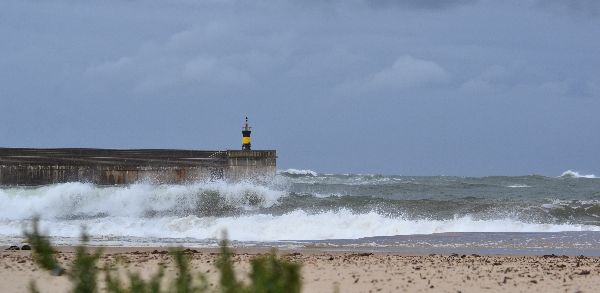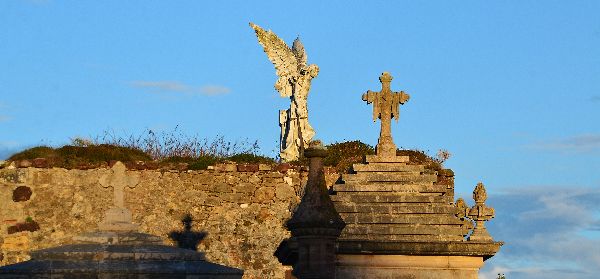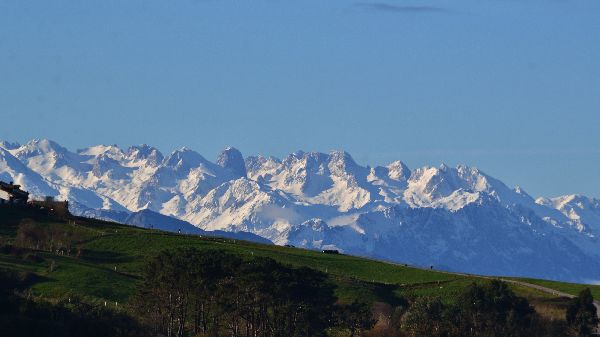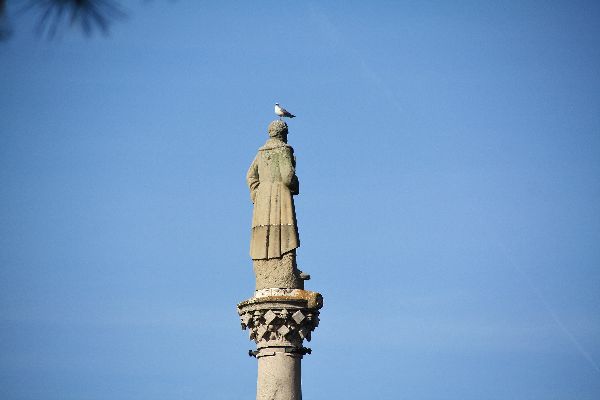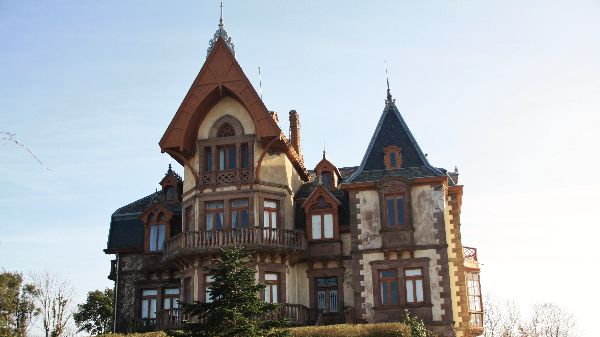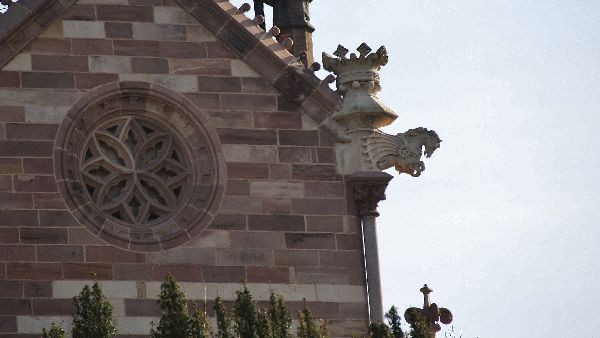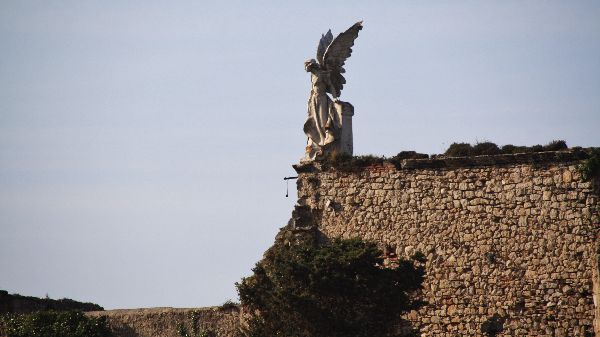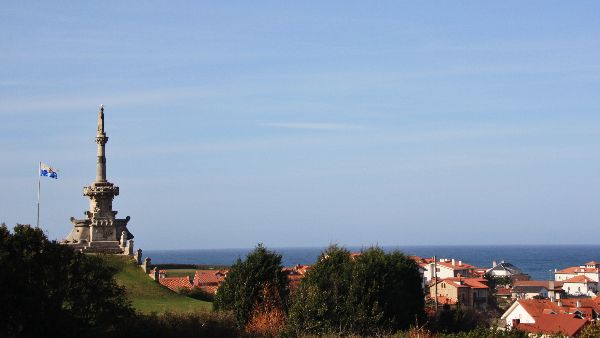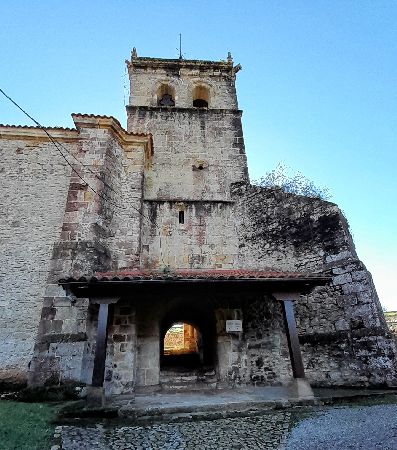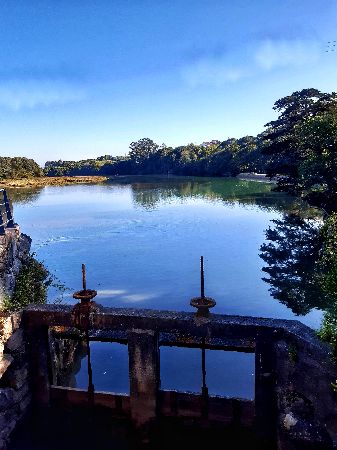Comillas

 Download the cheat sheet and go!
Download the cheat sheet and go!
|
Next to the Cantabrian Sea we can find the municipality of Comillas. Let’s start with the towns that make up the municipality: Comillas, La Rabia, Rioturbio, Rubárcena, Ruiseñada y Trasvía. Although its past is linked to the sea, with whale hunting playing a very important role, the 19th century was its greatest period of economic growth. Besides the beautiful architecture, nature is another value that’s important to the municipality, as part of its territory is within the Oyambre Natural Park. Two of the best places where you can enjoy this environment of high ecological value are from the La Rabia Estuary and Monte Corona. Next we’ll reveal more of its ESSENTIAL information and also clues and fun facts to get to know this municipality a little better:
The first building that was constructed was the Chapel-Pantheon. The first Marquis ordered it to be built in order to bury his oldest son, Antonio, who died very young. It was inaugurated in 1881 in the presence of Alfonso XII. A year later in 1882, construction began on Sobrellano Palace and it was completed in 1888. Both projects were designed by architect Joan Martorell.
In front of Sobrellano Hill—where the Palace and Chapel-Pantheon are located—you can find the Major Seminary belonging to the Old University of Comillas at the top of La Cardosa. Its construction began under the 1st Marquis; however, after his death, his son Claudio the 2nd Marquis of Comillas finished the project. Initially, it was going to be a high school however, it ended up being the Pontifical University. Artists like Joan Martorell, Cristóbal Cascante and Domènech i Montaner participated in its construction.
Originally called Villa Quijano, the Capricho is a historical landmark in Comillas. The owner was Don Máximo Díaz de Quijano: Indiano, lawyer, musician, and brother to the 1st Marquis of Comillas’ sister-in-law. It’s one of the first projects undertaken by Gaudí when he was just 31 years old. Outside of Catalonia there are only 3 complete works by Gaudí and we have one of them here. It’s a colorful building covered in ceramic tiles with sunflowers and full of symbolism.
This fountain is a design by architect Domènech i Montaner and was built in honor of Don Joaquín del Piélago, son-in-law of the first Marquis. This also served as a significant economic contribution for bringing water to Comillas.
Also known as Puerta de los Pájaros (Birds Gate), this is place a bit further from the center, but well worth the walk there. This is the entrance to the Moro House. Gaudí, the architect, designed it for a villa in Barcelona. Years later, architect Julián Bardier took up the blueprints and constructed it in Comillas.
The viewpoint can be found next to the hermitage of Santa Lucía. Here we have panoramic views of part of the coast and the beach of Comillas. It’s no coincidence that the watchmen chose this spot for whale watching.
Next to the old town hall, in one of the most picturesque squares in Comillas, you can find San Cristóbal Church. Legend has it that a conflict with the Duke of the Infantado, caused the people of Comillas to abandon the old church (which is now the cemetery), and get to work constructing the new one.
This is one of the best places in Comillas where you can get a panoramic view of the coast, the port and the beach, the cemetery with its iconic angel, and the mansion of the Duke of Almodóvar del Río. If you stand at its viewpoint, it feels like you’re at the bow of a ship and accompanied by someone very special. We’re referring to a monument in honor of the 1st Marquis of Comillas, which was made by Domènech i Montaner and Cristóbal Cascante.
We recommend having the complete beach experience: sunbathing, going for a swim, a walk and having some delicious ice cream! For centuries the port was important because of whaling, although sphalerite and calamine (minerals which can be found very close to Comillas) were also transported from the dock. Nowadays, it continues to function as a fishing port. If you look towards the breakwater, you can find a commemorative plaque dedicated to distinguished Comillas native Jesús Cancio, “Poet of the Sea”.
The cemetery was built upon the old church of Comillas. Legend has it that in the 17th century, a woman who routinely sat on one of the church pews was forced to move so that the Duke of the Infantado could sit down. The town got upset and decided to abandon the church and build another one: San Cristóbal Church. In 1893, Domènech i Montaner designed the changes and added the surrounding wall which makes the church ruins stand out. One of the symbols of the cemetery is the sculpture of the Guardian Angel made my Catalonian sculptor Llimona.
The port of Comillas was guarded by a series of sentry boxes (“garitas”) and a fort with artillery pieces. That’s where it gets the name La Garita Point, also known by its geographical name, Moría Point. From here you can see Suances on the east and Oyambre Cape on the west. On sunny days you can even see the Picos de Europa (The Peaks of Europe).
Can you imagine over 5700 football fields together? Well, that’s approximately how big Oyambre Natural Park is! The park covers two areas within the municipality of Comillas: one being the La Rabia Estuary, which is the mouth of the Río Turbio, and the other, part of Monte Corona. To fully enjoy this environment, we recommend walking or cycling. There are several trails at the following link from the tourist website of Comillas. Trekking in Comillas
This easy stroll starts in Comillas, where you walk in the bike lane to La Rabia Estuary. After that, you walk along to road until you reach Rioturbio. Before you reach the town, you’ll cross the tail-end of the estuary, a very special place where migratory birds arrive at the end of summer.
Here there’s a greater incline. You follow the same route as the previous one, and once you reach Rioturbio, you follow the road until you reach a bridge. Without crossing it, take the path on the left to go up to San Esteban Hermitage.
If you leave the car parked in the town, you can take a path that leads to the rocks where the La Rabia Estuary meets the Cantabrian Sea. The views are out of this world! On a clear day you can see: the Picos de Europa, the beach, Oyambre Cape, La Rabia Estuary, and the Zapedo Marshes and of course, the Cantabrian Sea.
Located in the heart of Monte Corona, San Esteban is a place with breathtaking views! From the view point, there are arrows to help indicate the sites you are looking at: Peña Vieja, Caviedes, the Naranjo de Bulnes, Labarces, Lamadrid, Sierra del Cuera, San Vicente de la Barquera, La Revilla, El Tejo, the Mayor Seminary, Ruiloba…It’s a spectacle for all of your senses! |




